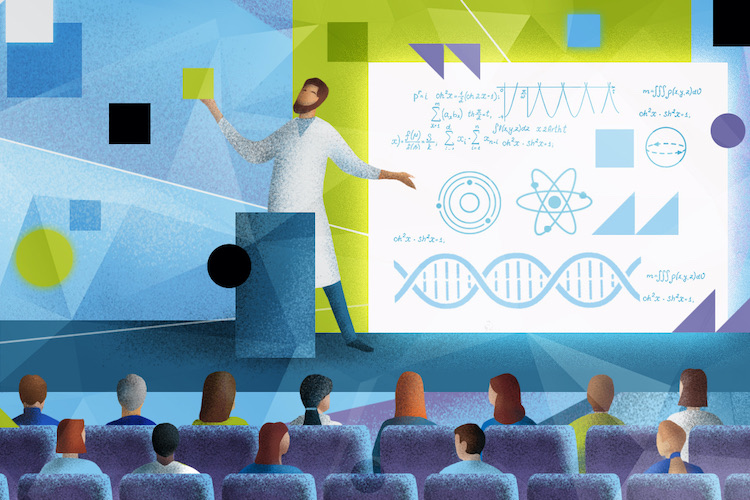Meritocracy and Topocracy of Networks
Economist Cesar Hidalgo on the meritocratic system, rock star behavior, and market mechanisms
videos | December 27, 2013
Why is the market believed to be meritocratic? What is a topocratic system and what is its difference from a meritocratic one? How is content produced nowadays? These and other questions are answered by MIT Assistant Professor of Media Arts and Sciences, Cesar Hidalgo.
For inequality to exist there must be some story justifying why those at the top deserve more than those at the bottom. In ancient times basically it was religion – kings had an association with God and because of that association with God they were allowed to have more, and people that were at the bottom understood that the ones on the top had an association with God and therefore they deserved more. But shortly, in recent years, recent centuries that has not been the most preferred option and we need to develop new explanations.
One of the explanations that have emerged is this idea that the market is meritocratic, meaning that the market allocates things in such a way that the ones who contribute more get more, and the ones who contribute less get less. That has been a prevalent idea, but the question is, is that idea contingent to maybe some overly simplified view of the world or some assumptions that are a little bit too blunt?
One of the things that we have been exploring is, we have been exploring the creation of mathematical models that can help us understand whether markets are always meritocratic or not when these are structures according to networks. I’m going to introduce a very simple idea and what I’m going to ask you to consider, is to consider that you have a little network, in which every node is an individual, and those individuals every time that they produce a certain sort of cultural content – a book, a movie, a song, something like that – and they sell that content to other individuals in that network. Now I’m going to assume that every individual in that network is endowed with a parameter T, which is his or her talent. So if you parameter T is set up on 8, you sell your content to 80% of the people, if it’s set up on 2, 20% percent of the people buy your content. So in some sense the more talent that you have, the more revenue you should expect to have because you have more potential customers.
You can think that that network might be fully connected and, if the network is fully connected, what you would find is that that system is perfectly meritocratic because the guys that have more talent get more income, and the ones that have less talent get less income. But we can assume now also that the system is not fully connected. That means in some sense that if I want to sell some content to you, maybe, I’m not going to be able to sell it directly and I’ll have to go through a circle and this path is going to do through a number of people. Those people that are in between are going to get a cut. So one is going to assume that in the behavior to sell content, I’m going to call that behavior a rock star behavior, and when I’m intermediating content, I’m going to call that an agent behavior, so in being an agent I’m sort of arbitraging things.
You can think that in a node that’s fully connected, certainly the rock star behavior determines that everyone is meritocratic, but as we start making the network sparser and sparser, eventually what’s going to happen is that the guys that are in between, the guys that are agents, might be getting a larger benefit than the guys that are generating the content. If you think on the extreme opposite of a fully connected network, which would be a star network, in which there is one hub in the middle and every other node is in the periphery, basically most of the income is going to go into that hub, because the shortest path to go through a node is the square of the total number of nodes in the network. So what we have done in this model is solved everything analytically and we have explored, at which point a network goes from meritocratic to topocratic.
A meritocratic system is a one in which the individual contribution is proportional to compensation – the more you contribute the more you get compensated. A topocratic system is a one, in which compensation depends on how is the individual connected in the network – if he’s better connected, he is connected in a more central position. And what we’re able to show, that under relatively general conditions, the transition between meritocracy and topocracy occurs when the average connectivity of the network is equal to the square root of the total number of nodes in the system.
Let’s use some numbers as an example. Let’s take a population like the US, 300 million people. According to this very simple model, which definitely you should take with a pinch of salt, what we would find is that in this simple model you would need to know on average 17 000 people for the system to be meritocratic. That’s a lot of people, nobody knows 17 000 people, and on average certainly we don’t know 17 000 other people. So in some sense if we take the model as a representation of reality, we would conclude that we would live in an actually topocratic system; that it matters more who you know, than what you’re able to contribute. If we take the opposite way of transforming this into numbers, and we fix the number of links that you have, so we take number of a 150, and we say that you have 150 contacts, what would be the maximum size of a network that would be meritocratic. It will be a network of only up to 22 000 people. Any network that would be larger than that would actually become topocratic.
In some sense what this model tries to illustrate is that, if you have a system in which a number of connections, which a person has, is limited and is bounded and it’s relatively small compared to the total number of nodes in the system, then under very simple conditions you will find that those systems are going to be more topocratic, than meritocratic, and assuming that market mechanisms are mechanisms that eventually distribute to people according to their ability to contribute, is not necessarily the case.
So the way that we summarize the main idea on that paper is we say that everybody receives according to their degree. You know that Marx said, “to each according to his needs,” and here we say, “to each according to his degree,” because ultimately how connected you are ends up determining, in this simple mathematical model, how much you get.
In this model what are the connections we’re considering? The connections that we’re considering are those connections that allow for the intermediary node to arbitrage content or that sale and purchase cause for content between others. It’s not a random acquaintance connection but it’s a connection in which actually this intermediary has some sort of leverage. That’s if you are an intermediary node as an agent. As a rock star the connections would be the number of people that you can actually sell your content directly to. That would be the total number of people to whom you are connected and you would have in this case a channel to distribute the fruit of your work.
If you think about social media and whether people in social media are arbitraging content or producing content, whether they are intermediating or producing things themselves, I would find that there’ a lot of people in this type of media that eventually are retransmitting or amplifying things being shared by others. So not necessarily there is a perfect association between how popular a person is in social media and how much content they are able to produce but in many cases the association is that there are people that are very good at identifying and amplifying other peoples content. In some sense you could say that that person is performing a more intermediation role. Certainly there are exceptions and there are much more noise in the real world. An example I was describing is a very simple model that we’re able to solve analytically with pencil and paper. And usually when you solve stuff with pencil and paper it’s relatively simple, but the results that come out have a way of teaching us about the world and helping us think about the fact that there might be a transition between meritocracy and topocracy that emerges when the networks that we inhabit relatively large.
Well, now with the new media, is this going to help stimulate meritocracy or is it going to hinder the rise of meritocracy? I think that it depends on which type of media we’re communicating through. The prediction of the model here is very simple and it’s very straight-forward. You have a group of people and these people become more connected – the system becomes more meritocratic. Among the networks of people that are distributed and are self organized, what the model is predicting is that those networks of people are going to become more meritocratic. At the same time we have that happening nowadays in the web. You have groups of people that are self organizing and there are new forms of leadership emerging and there’s new content emerging, and people just pick up on the content because it’s good, not necessarily because it’s being pushed to them by marketing machinery.
At the same time you have other media that has been marked by the rise of these enormous hubs. If you think about in the past, music was distributed through a number of different stores. Nowadays it’s all through iTunes. And from the point of view of the seller and the buyer their economy is based on the fact that there is one single hub that is the one that is mediating everything. It’s easier to find the content that they want, there is less cost to the buyer, less cost to the seller but at the same time that hub definitely gets a really big share because it’s almost a monopoly in that network.
I think you have both of these things going on. On one end you have an increase in inequality, based on the fact that modern technology allows super-hubs to emerge, you can have a basically infinite number of customers, you need only one Facebook in the world and you need only one iTunes in the world because you don’t have the problem of distributing things physically anymore. And that’s sort of a new source of inequality that on the short run is beneficial for the buyer and the seller but eventually it has the systemic effect of making society unequal. On the other side you have a more meritocratic system like the one that you would find on sites on which people are organizing themselves in a more distributed and horizontal manner. As those people become connected, those subgroups become more meritocratic. You could think of places like Etsy, which are places where people share and sell different types of arts and crafts type of content. I think these two things are happening now in parallel – some communities might be becoming more meritocratic, as they become connected, other ones as they become dominated by hubs they might have important economies but at the same time they’re becoming more unequal.





























